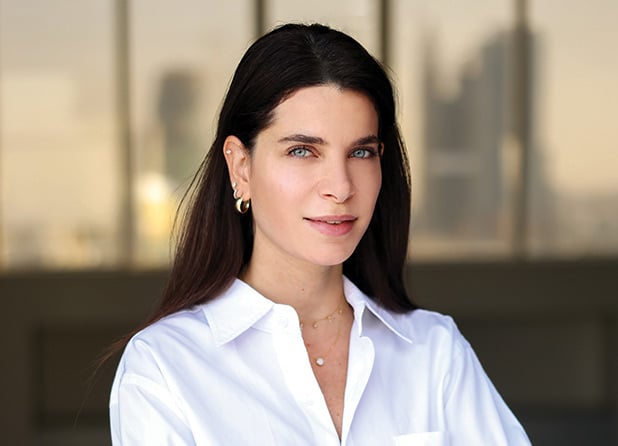By now it has been well established that the pandemic affected every aspect of our lives and changed our behaviour, preferences and priorities. Unable to physically interact with consumers, businesses had to rethink and re-strategise how to reach their customers in times of uncertainty. It is no secret that the pandemic accelerated the digital transformation of industries as they were reshaping their business models: e-commerce adaptation, delivery services and cloud kitchens, supply chains, digital acceleration, and the list goes on and on. The Covid-19 crisis accelerated the digitisation of customer interactions by several years, with the average share of customer interactions increasing by 59 per cent by July 2020 according to Mckinsey’s Covid Survey.
One sector in particular that manoeuvred its way through the pandemic is the luxury industry. In the midst of it all, luxury has not only adapted but has also gained new consumers by elevating people’s understanding of digital and reshaping its entire industry by creating its own rules to manage through difficult times. The digital path to luxury is a long one, but it has already come a long way. So how did luxury go from being reluctant to join the digital world to setting the trend?
Luxury’s digital pivot
First, a bit of a retrospective on the evolution of luxury marketing over the past few years.
Remember back in 2006, during the Devil wears Prada days when print was at the core of every luxury brand’s media strategy? When luxury brands were still reluctant to make the shift to digital, as social was the evil new joiner and e-commerce was still considered to be another episode of Back to the future.
Fast forward to 2013-2018 when consumers were younger and more tech-savvy, and the number of digital touchpoints in the consumer decision-making process was increasing year on year (According to McKinsey they tripled between 2014 to 2016). It was important for brands to follow their customers wherever they were (and we’ll get to develop on that a bit later). This is where social media started gaining traction and brands started understanding its value as they were challenged to reach their future consumers and target more millennials and Gen Z. Yet a lot of brands were fighting the urge of going social and spending with digital publishers to make that digital shift. Their dilemma was between retaining the exclusivity of the high-end luxury experience or opening up to the world at large.
Slowly but surely brands started riding the digital wave: display, video, digital content and influencers came into sharper focus and through digital, brands were able to measure growth and build on awareness. At that point they were still experimenting but the will to transition was there. In the region brands first approached publishers that had a solid editorial base and a strong understanding of luxury guidelines, such as OLN and Gheir, collaborating on editorial videos and big productions to localise content and be more relevant to the local consumer, and results were astonishing with millions of views reached and many videos reshared.
If we were to compare the evolution of the luxury and media scene to a Netflix show it would be The Bold Type – the show that is basically an updated version of Devil wears Prada, where characters in a print magazine battle the shift to the new digital age and where a team of multicultural millennials thrive to make changes while still maintaining the old.
Power to the new generation
This show is the perfect example of how the fashion industry is moving forward. To reach Gen Z, brands began innovating and found digital to be the best way to reach newer audiences. In 2016, Cartier was the first to advertise on WeChat – the Chinese Instant-messaging platform – via influencers. Dior revived the ‘Saddle’ back in 2018 globally by launching a campaign on Instagram where models, celebrities and influencers were posting images sporting their Dior Saddlebag. Web searches for the bag were up 1000 per cent and generated massive store traffic.
At the same time, audio came into play and brands began to associate themselves with music. For example, Burberry was one of the first brands that mastered bringing the two worlds together by supporting new talents. Alexander McQueen introduced playlists from his runway shows. Dior Beauty created a ‘Love’ playlist on Anghami to associate with Valentine’s Day. By linking themselves to music, brands were able to get up-close and personal with their audiences and keep them happy and engaged while gaining the ‘cool factor’ they had previously been missing.
Gaming and NFTs also started becoming appealing to luxury brands, in their bid to attract new buyers. An example would be the Louis Vuitton x League of Legends World Championship Finals collaboration, and so on.
The pandemic only accelerated these trends, as luxury brands were challenged to sell during dire circumstances, and without being able to extend the touch-and-feel experience customers usually benefitted from in-store. Essentially, they were forced to innovate.
This is where luxury’s own revolution started. While the shift to e-commerce was already planned, it was also extended to multiple services to complement the e-commerce experience without losing luxury’s unparalleled experience in leveraging all channels. Louis Vuitton hit record numbers in the first week of launching its new e-commerce site in the UAE; Tiffany introduced WhatsApp Business services; Chanel focused on its concierge service to continue reaching VIP clients during the pandemic. Some brands took it a step further by experimenting with AR, like Dior Perfume’s virtual store experience, which came up when no one could visit stores. It enabled users to virtually travel to their Champs-Elysees store for a unique retail experience. Every corner of the store can be seen and products on the shelves can be discovered through an information widget. It is so real, that you can almost smell every fragrance.
Another example of digital creativity was Virgil Abloh’s Off-White all-digital fashion show in February 2021; where he launched the ‘Imaginary TV’ – a microsite to showcase his collection. Abloh also created an interface, sort of digital remote control, where viewers can toggle through different channels and see artists, musicians and athletes riding skateboards and playing music, seamlessly wearing the brand. Abloh described it as “a way to connect with and generate” a global network, which brings together creativity while still invoking emotions.
Luxury brands understood that there was no winning formula to gaining the trust of the new generation. Brands had to not only be real and relevant but also reach consumers who now have a longer purchase journey.
Context is key
As consumers are asking for ongoing novelties, millennials are leading the way and teaching older generations. The reality is that the customer experience will become the key driver and it won’t be a matter of digital touchpoints only, as the luxury sector is finding a way to balance between expanding to a unique digital presence while still investing in a premium offline experience. With that in mind, capturing the user in real-time in the right mindset is what makes a difference.
Millennials and Gen Z are used to online purchases, but still, find pleasure in picking up an item from the store. Brands and publishers should work towards developing online and offline journeys simultaneously rather than one cannibalising the other. The purchase journey is no longer a funnel, and reaching users in the right context at any time is what will deliver ROI. Jamalouki is one of the first publishers that mastered the omnichannel approach, uniquely leveraging each platform to reach audiences differently. For its monthly cover, Jamalouki collaborates with brands and key opinion leaders launching first a digital cover on social, an interactive way to create a hype around the collaboration. A few days after, the digital cover is followed by the print release with a cover and the shoot using different creative. Throughout the month, a series of content pieces are launched on the website and Jamalouki’s social platforms – from a conceptual video to behind-the-scenes stories, to images catered for social only and different segments to highlight the collection. Each content piece is carefully curated to fit the audience and their behaviour on the platform to get better results, reaching users wherever they are.
While other sectors focused primarily on conversions, luxury’s mantra remains brand-building, bridging awareness to performance. Luxury took the leap, by telling meaningful stories and becoming the first to innovate, test and adopt. The sector leveraged offline media to extend awareness to digital with impactful augmented reality executions and finally got up close on the ground through events. Brands are upping their game and the number of luxury events that are taking place across the GCC prove this point. From Armani bringing Coldplay’s Chris Martin for a mini-concert to Chanel having a cruise show repeat in Dubai with John Legend and Kungs as performers. This is the age of luxury.
If the past year taught us anything, it is that people adapt, consumers evolve and behaviours change. Purchase habits are not set in stone. Luxury brands understood that it’s all about differentiation. Marketing strategies should be the perfect mix of digital connectivity while still going back to the traditional channels and mediums to create an immersive experience, which remains rooted in delivering heritage to the table.
I will leave you with three key take-outs:
The luxury consumer’s purchase journey is far from being linear. An omnichannel strategy might win you bigger gains.
Brands need to acknowledge all customer touchpoints – online, offline and in-store – and adapt a unique experience to each.
Go big if you want to get noticed. Print is still strong and digital empowers brands to individually tell their story and deliver a unique experience to customers.










